Etno na licu mesta: Mak - Hrv u Skoplju
imao je Aco djece... ako nista drugo, ono celjade od Rokselane, koje je ubijeno dok je imalo 10-11 godina, kako bi ga se sprijecilo da se proglasi nasljednikom imperije... vanbracne djece tko zna koliko... no, kao valjda i svaki Grk tog doba, a koji je drzao do sebe, Stari Aca je bio dvocijevka
[uredio istok.stajanje - 21. studenog 2007. u 12:35]
Profo jednom se pokusalo otvorit takvu temu na forumu ali bila je stopirana od strane admina sa objasnjenjem sta bi bilo kad bi svi koji dolaze na forumu otvoraju teme za svoje zemlje.Kao da na forumu docice pola sveta i nece imat mjesta.Inace sto se tice etnickog identiteta i kulturnog nasljedja tice potpuno je jasno da preovladava slavenstvo.Ali opet i opet cu ti reci da imamo prava na te tzv.anticke makedonske kulture jer nije mi pojmljivo da bas sav taj idenitet potice samo od slavena.Pa sigurno su nesta uzeli i do anticki makedonaca kada se zna da je njihova kultura bila na visoj razini.A da je kultura koja je vladala za vreme Aleksandrove imperije ima puno veze sa grckom imala je posebice ako se zna da svi njegovi ucitelji bili iz stare grcke drzave.
NYC je napisao/la:
Aleks, pitanje o makedonskom poreklu nije pitanje o DNK, odnosno "krvi", već o etničkom identitetu i kulturnom nasledju.
Ali, kao što i sam kažeš, ovde nije mesto takvoj diskusiji. Možda bi vredelo da (baš) ti otvoriš novi topic, "Makedonsko pitanje", ili samo, "Makedonija"? Што сториш, братко? 
Vidi cijeli citat
ja o makedonskom porijeklu nemam pojma, i kad malo promislim lagano mi je neugodno...ali ipak ne toliko da bih uzeo kakvu knjigu pa je pročitao i tako živim u neznanju. ono, ima vremena

bit će da sam bio bolestan kad se o (fyr) makedoniji učilo u školi, a ni svega onog o antičkoj makedoniji se baš ni ne sjećam...
o Makedoniji se zapravo ni ne uci, bar sto se tice nastave povijesti u skolama. Sve stane u 3 recenice.
Aleksandar, pa nista
moja generacija je spominjala Samuila, ovi danasnji sasvim sigurno ne... pa opet dugo nista, pa Karposev ustanak, no sumnjam da danas to uce, nema potrebe... sljedeca tocka je bio Ilindenski ustanak, komiti, VMRO, no nisam siguran da je to danas u programu i udzbenicima, najvjerojatnije ne... mozda nauce da je SRM bila jedna od republika SFRJ i to je to...
[uredio istok.stajanje - 21. studenog 2007. u 12:52]
Pa i ja mislim da nema potrebe uciti sve te stvari od pocetka koji su vezani za Makedoniju.Ali recimo istoce ovo.Covek iz sadasnje generacije Hrvata koje uce jedino sto je imao za znati oko Makedonije je to da je SRM bila republika za vreme SFRJ i toliko.I onda mu dodje jedan od puno antimakedonskih elemenata od kojih neki imaju onu tezu da je Makedonija titova tvorevina i da nije ranije postojala.I sta ce pomislit taj mladi decko proizasao iz hrvatske skole?
Ja spomenuo Aleksandra a vidi gde je sve to otislo.Stanite ovo je sportski forum,sve sto se ovde dogadja nema blage veze sa sportom.Oprostite hrvati ali vi se veoma nedolicno ponasate.Kao da postojite samo vi i vi kao da ste najbolji i omalovazavate sve,samo dobro je da volite cenite i da uzdizete naciju,samo nemojte mrzeti i vredjati druge.Pa vi ste od nas napravili kao da smo indiska provincija UTAR PRADESH (oprostite indijci).
Ja znam da vi volite puno svoju domovinu,ponekad i mi je zao sto mi makedonci nismo u tome slicni vama ali nikoga ne mrzimo.Pa vidite sta nam rade grci,a mi smo ti puno prijateljski raspolozeni prema njima,i to sa imenom ce proci i bicemo frendovi.Jos jedan put ponavljam ponasamo se kao krvni neprijatelji a mislio sam da nam je Hrvatska najbolji frend i da hrvatski narod je prijateljski raspolozen prema nama ,samo nadam se da ovo sto se tu dogadja su sramni pojedini slucajevi.
Mi nemamo nikakvih otvorenih pitanjea izmedju nasih zemalja,nismo ratovali,a ispada kad bi bili susjedi da bismo se klali.
Opet priznajem vasu superijornost u fudbalu pa i opce u odnosu na ostale iz ex Yu pa i nas.Patriotizam ,nacionalizam su do nekle OK samo nemojte to da prelazi u shovinizam.Dao sam vam puno komplimenta koje uistinu mislim,samo shvatite da ima puno naroda koji su dobri posteni i casni .
Samo jedno pojasnjene.Ja sebe smatram slavomakedoncem,Pa i nemam nista protiv da je ime moje Makedonije -Slavomakedonija,time se potvrdjuje moje makedonsko i slavensko podrijetlo.Kad su dosli slaveni recimo kod nas u Pelagoniji tu su zatekli neke ljude nisu oni isparili a to su bili drevni Makedonci.Ramnica kod Bitolja zove se Pelagonija,,grad prestonina Anticke Makedonija zove se PELA to vam je danas u Grckoj Makedoniji.Na 2km od Bitolja nalazi se HERACLEA LINKESTIS tu je 300 g.pne.prosao Aleksandar Makedonski Aleksander the Great.Heracleu je osnovao Philip II evo malo vishe i tome.
Pozdrav Hrvatima volite se ljudi volite i cjenite one koji Vas vole i postuju.Tako dodje vistinska satisfakcija.VELIKI USPEH VAM ZELIM VECERAS NAVIJAM ZA VAS.HRVATSKA,HRVATSKA,HRVAT......
MOZETE LI NA TOME UZVRATITI,NAVIJAJTE ZA NAS SA IZRAELOM.POZDRAV
HERACLEA LINCESTIS
We shortly mentioned Heraclea Lincestis in the part “Bitola through centuries”. Here we will focus on those segments, which are important for the cultural tradition present in this area, because the cultural heritage of Bitola has a lot in common with what this ancient city stood for. The abundant discovered material, fixed and movable, speaks of a cultural world of more civilizations that drew the spiritual map of humanity, in whose coordinates the current Bitola area had a significant place. That is a multi-layered settlement. Remnants of different historical epochs and cultures lie there one over the other, starting from late bronze until the Hellenic, Roman and Early Byzantine period. Between the last two time distances, a barbaric-gothic settlement is embedded, and Slavic, middle age and other buildings characterize the end. Some of these layers have not been completely examined and scientifically verified. There were several motifs for the great ancient king and army leader Philip II, the father even more famous Alexander of Macedonia, to decide to establish the city here in 349 BC. One is sure - the strategic position enabled it to be the most convenient link between East and West. The fast spread of Macedonia country influenced that as well. With his victory over Greeks in 338 BC he opened the path to his son Alexander III of Macedonia to enlarge the territory of Macedonia on three continents. He got as far as India, which according to that time knowledge, was the end of the world. Later the city fell under Roman authority (middle of 2nd century BC). Via Ignatius passed here. The city also had a big military-strategic importance. It should be mentioned that in the time of establishing of Heraclea, the upper Macedonian tribe Lincestis lived in Lincestida territory. That is where its second name comes from. Its existence lasted for about one millennium. Art and culture flourished here. It was a highly civilized city with numerous social and other structures: theatre, thermal baths, statues, mosaics, basilicas, residences etc. It was an Episcopal seat whose bishops are mentioned on several church gatherings. Most of the found cultural monuments date from Roman and Early Byzantine period. The Hellenic material culture has not yet been explored enough. Some hold an opinion that Hellenic Heraclea was on the hill, on the north of the present city. The excavated buildings from Roman time The portico possesses all the marks of the Roman constructing mastery, despite the fact that there are only remnants of a building. Interesting monuments of honorary and votive monuments, such as two statues and a few inscribed posts, were found. It has a rectangular shape, stretching 17,45m. East to west and 7,45 m. wide. Basically, it is a kind of a porch. On one of its sides the roof leans on a wall and on the other on a row of posts colonnade. After reconstructing and examining of the found material it can be concluded that the colonnade of post was built in Ionic style. Its actual appearance and the aim it served can only be presupposed. What is sure is the fact that it was a building with public and representative character. Experts hold an opinion that it was the courthouse - buleuterion. However, the possibility that it was a constituent part of the thermal springs, then a gymnasium, a library or so, is not excluded. The monuments of the goddess Nemesa belong here, dedicated to her by Julius Tertila then the prominent citizen, priest and humanitarian Tit Flavius Orest and the basis with poetry from the epic “Deeds and days” by the poet Heziod. The portico dates from the end of the first and the beginning of the second century BC. One more ensemble that attracts the attention is the thermal baths. They represent a system of mutually joined rooms, which functioned as a bath. A part of it was discovered: a hall for bathing with cold water-frigidium on the eastern side; a hall with tepid water-trepidation in the middle; and a heated hall with hot water-caldarium. In the west wall of the bath, next to the caldarium, there are three fireplaces-prefurnia. The floor and wall heating system is very interesting. There was free space under them through which entered the hot air and the Among the most famous, and relatively well preserved, architecture pieces are the Roman theatre. It is an urban structure of the rich Roman constructing tradition. It is located in the central part of the city and dominates with its architectural beauty, especially with the decorated and lively south front. Its building had probably started by the end of Adrian’s rule, and it was first used in Antonin Pye’s time (2nd century AD). It represents a skilled synthesis of the basic elements characteristic for the famous theaters and amphitheatres. Its universality enabled staging of various programs. It was built according to that time proportions of a Roman type of a theatre, by the known constructor Polio Vitruvie, who lived in the 1st century AD. It is located on the hill slope, which has a south exposition. The configuration of the terrain is completely used, which made the construction cheaper and fast. The basis of the auditorium has a shape of a semi-circle, with 20 rows of seats having a diameter of 58,50m. The first row differs from the others because it has rectangular marble blocks under it, spreading outwardly from the front edge for 0,25m: the space used for supporting the legs only of the spectators of the front row. The inscription of the front side of the seats reveals the privilege of these spectators. They were seat reservations for four municipalities. In the central part of the audience, between the 4th the 8th row, there were titular seats, that is a titular box. It was a tribunal for the magistrates who took care of the games or for their organizer-editor miners. The orchestra-conistra has a shape of a semi-circle with diameter of 26,40m, while the other rectangular half of the theatre is in fact the stage where the main parts necessary for the programs were situated. The theater had other important parts such as: places for placing of a cloth roof (certain gaps) called-velum; the east and west analema (entrances); three cages for animals-stabula; stage front and other elements, which constitute such a complex construction. Being such a universal theatre it served multi purposes including gladiator fights. Theatre plays had a significant role in Heraclea cultural life: their popularity varied in different period. Their origins should be looked for in ancient cultural celebrations dedicated to the Dionis, the god of fertility and wine. This mainly refers to ancient Greeks. Romans’ attitude to ward theatre was completely different. It exceedingly lost its attractiveness on the expense of the new forms of spectacles in amphitheaters, circuses and hippodromes. They appreciated gladiator fights, hunting skills, horse races more. In Greek times the theatre taught the spectators how he should (shouldn’t) be like, though the example of the play. Roman theatre is more entertainment and less philosophy of life. This influenced the content of play programs. The dytirhamb is one of the oldest play types - a satirical song dedicated to the god Dionis, nourished in these areas. This is supported by the objects found in Heraclea and other archeological localities. Characters of sirens and satires, temperate creatures of nature are represented there. Also, very popular were the performances of mime and pantomime. Especially favored by Roman youth were Atelan farces, which were shown as a closing part of some performance with burlesque epilogue. The play and the comedy had a central part in the programs. The history of using theatrical mask speaks a lot about the attitude towards theatre categories and kinds and their presentation in the theatre. The mask was always used by actors, when the god Dionis had the main role in the play. Its introduction in the theatre has a significant meaning connected to the cult, which was especially nourished in antic Greek theatre. Romans introduced it later. It differs from ancient Greek mask because it has more accented dimensions, bigger gaps for the eyes and lips, and with more striking eyebrows. The hair is styled as a wig with short curls and high forehead. This can be clearly seen on the tragic white marble mask discovered in Heraclea theatre. It represents Hercules. It has lion skin over the head. A wide-open mouth dominates the face, with an expression of pain and wide eye cavity. Over them is the accented brows thrust downwards. The beard is big and thick, and the forehead is wrinkled. There are other monuments in Heraclea, different objects, which speak of the abundant theatrical life and art in general in this antic city. We will mention a few more: Dionis’s At the end of this part the question arises of why and how the Heraclea theatre stopped living. The answer requires an exhaustive elaboration. With the fall of Roman Empire new courses of life emerged with different religious and philosophical views and moral codex of a time on the verge of leaving, which frequently physically destroyed the old one. In this sense, with the Constantine’s edict from 325 and Honor’s restriction from 404, deadly strike had been made to antic spectacles. The victory of Christianity and its church practically condemned these cities to destruction. They were dying slowly, but inevitably, even though, stone mostly built them. Numerous factors influenced their destruction: political and religious intolerance, passing of time and mostly man. The material of the wonderful buildings were violently and impudently taken in order new buildings to be made, artistically poorer, and some of them completely primitive. The sites of such localities were turned into stone-pits, and the fabricated stones and marbles were used for making protective walls or foundation of roads. There were cases to build ordinary buildings from stone and mud over these localities. Even the objects of art: statues, mosaics, marble plastic were used as building material. The case with the statue of Orest illustrates this attitude most vividly. It was found as a supporting stone of a wall. Wars also caused great damage to these structures. Among them were the barbaric hordes, which were devastating the region in 5th century. With the abandoning of Heraclea theatre, the erosion made its way in the course of centuries. It covered its remnants. It is considered that this theatre stopped existing around 5th century. Some more precise evidence of its end has still not been found. What makes Heraclea theatre locality interesting and famous are the structures from early Christian period: the big and the small basilicas and the Episcopal Residence. When the Roman Empire starts weakening by the 3rd century, it reflects on art and urban living as well. Christian religion being dominant one imposes itself strongly in all social spheres. At the same time it becomes official religion in this part of Macedonia. On the west, late antic art gradually gave way to pre-romanticism, while in the east the changing trend was of slower character. The small basilica is located in the southeast part of the site, opposite the portico. It is three-vessel basilica, with an apse on its eastern side. It is considered that it had been built by the end of 5th century AD. In the narthex of the building, remnants of a circle shaped piscine-pool, with a marble statue in the center, where from the water burst as a fountain, were found. It leads scientists to a conclusion that was a baptizing pool, that is, the whole ensemble with the basilica in the east was used for baptizing. The floor of the exonerate was a mosaic with geometrical and zoo-morph elements. Shapes of rhombs and squares prevail in geometrical compositions evident on a vase, a basket or pattern. Whereas in the zoo-morph motifs, birds (grouse, pheasant, duck etc.) and animals (lioness and zebra) can be seen. The big basilica is especially important because of its mosaics located on the floor of the narthex. There are mosaics in all nine rooms, but the ones in the narthex with their art qualities and iconographic values represent unique masterpieces. Actually it is a big composition, which symbolically reveals the Christian idea of universe: the heavenly kingdom, Eden, earth and water. This remarkable art picture belongs to those few preserved pieces of antic painting, stretching on 100 m². It has abundant color features achieved by 20 colors and nuances with stone cubes, glassy paste and ceramics. The beautiful trees with fruit around which birds fly by the flowery bushes, represent heaven as seen by Christian church. There are ten trees. Nine of them have fruits. The last one is futile representing the paganism as fruitless religion, opposed to Christianity being as rich as the nine trees. Out of the found separate motifs, three represent heaven, earth and water and the motif in the medallion signifies the heavenly kingdom.
The Episcopal Residence has been partially uncovered. In the excavated part of this ensemble there are the premises around the central yard. The apse room, located on the north side, has a dining room, triclinic. There is a row of rooms on the eastern and southern side. In four of the rooms there are mosaics. The yard is interesting with a well in a marble frame, decorated with cannelures. Further excavation of the locality will form a more complex picture of this early Christian structure. All this that has been a matter of discussion so far, represents only part of Heraclea Lincestis cultural heritage. Under the influence of immense historical changes and natural catastrophes, among which was the big earthquake in 518, as well as other reasons, it is considered that the life in this antic city ceased existing by the end of 6th century. Today it is a renowned cultural monument, not only within the country, but wider. Excavations are still being conducted on the locality. Many of its structures are being revitalized and are used for housing various cultural and artistic manifestations. This is especially characteristic for the Theatre where musical performances, theatrical performances, literary happenings are held. Heraclea is a constituent part of the rich cultural offer of contemporary Bitola. |
|
Pongračiću puna minutaža u prvoj ligaškoj pobjedi Fiorentine ove sezone
Hrvatska futsalska reprezentacija pobjedom protiv Kolumbije do trećeg mjesta u Metzu
Ivan Leko s Club Bruggeom do pobjede protiv kluba iz kojeg je nedavno preselio
Carević: 'Tri minute nadoknade nisu normalne, a Rijeka nije imala izrazite prilike'
Makedonci,Pratete go mojot primer zatrupajte gi so istoriski i kulturoloski fakti neka vidat od kade poteknuva civilizacijata,oti makedonija e bibliska zemja pa posle hrvatite neka si go tinkaat deka se najarni.Pozdrav Makedonijo.Povikajte poveke luge i prijateli pa nekavidat ubo za ova vreganjevo.
Pozdrav
|
|||||||||||||||||||||||||||||||||||||||||||||||||||||||||||||||||||||||||||||||||||||||||||||||||||||||||||||||||||||||||||||||||||||||||||||||||||||||||||||||||||||||||||||||||||||||||||||
|
|||||||||||||||||||||||||||||||||||||||||||||||||||||||||||||||||||||||||||||||||||||||||||||||||||||||||||||||||||||||||||||||||||||||||||||||||||||||||||||||||||||||||||||||||||||||||||||
|
|||||||||||||||||||||||||||||||||||||||||||||||||||||||||||||||||||||||||||||||||||||||||||||||||||||||||||||||||||||||||||||||||||||||||||||||||||||||||||||||||||||||||||||||||||||||||||||
- Najnovije
- Najčitanije
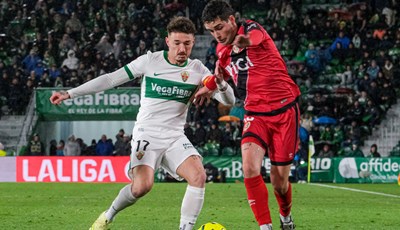
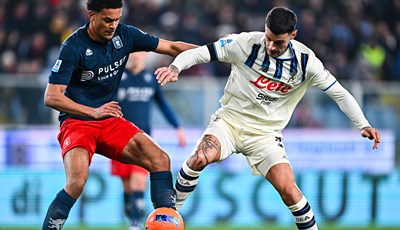
Atalanta u sudačkoj nadoknadi iskoristila igrača više i slomila Genou
27 min•Talijanski nogomet
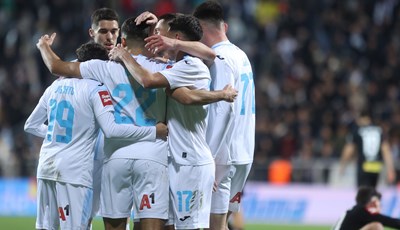
Ante Matej Jurić donio Rijeci pobjedu za kraj 2025. godine
3 sata•SuperSport HNL

Hrvatska futsalska reprezentacija pobjedom protiv Kolumbije do trećeg mjesta u Metzu
1 sat•Futsal
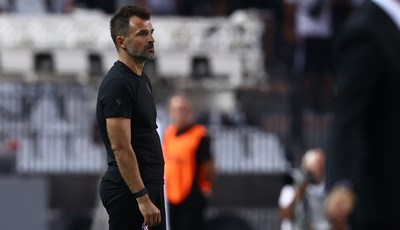
Ivan Leko s Club Bruggeom do pobjede protiv kluba iz kojeg je nedavno preselio
1 sat•Europske lige
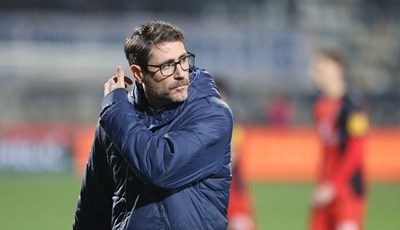
Sanchez: 'Nećemo se žaliti, to je za gubitnike, probat ćemo se boriti do kraja za prvenstvo'
2 sata•SuperSport HNL
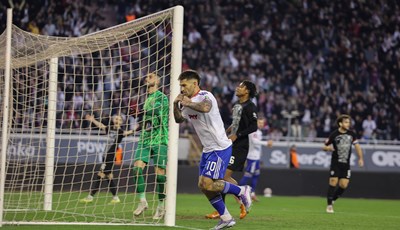
Krasna akcija Hajduka, Livaja se vratio u listu strijelaca!
2 sata•SuperSport HNL

Carević: 'Tri minute nadoknade nisu normalne, a Rijeka nije imala izrazite prilike'
2 sata•SuperSport HNL

Bizarna utakmica na Poljudu, Hajduk s devetoricom sačuvao pobjedu protiv Vukovara!
6 sati•SuperSport HNL

Ante Matej Jurić donio Rijeci pobjedu za kraj 2025. godine
3 sata•SuperSport HNL
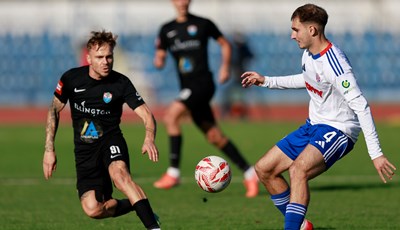
Kronologija: Hajduk izvukao pobjedu protiv Vukovara 1991!
8 sati•SuperSport HNL
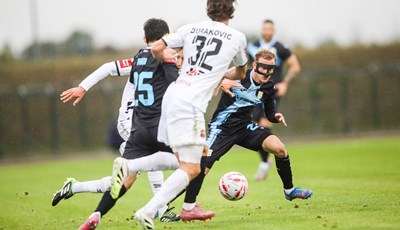
Kronologija: Rijeka slavila protiv Gorice na Rujevici
5 sati•SuperSport HNL

Carević: 'Tri minute nadoknade nisu normalne, a Rijeka nije imala izrazite prilike'
2 sata•SuperSport HNL
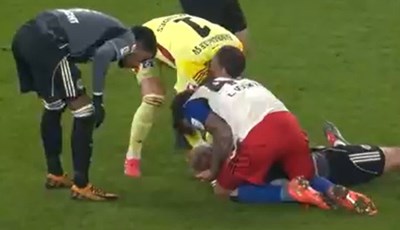
Težak sudar u Bundesligi, Vušković prvi pružio pomoć veznjaku Eintrachta
11 sati•Fanatik

Aston Villa u sjajnoj formi dočekuje Manchester United kojem pobjeda donosi skok u poretku
9 sati•Engleski nogomet
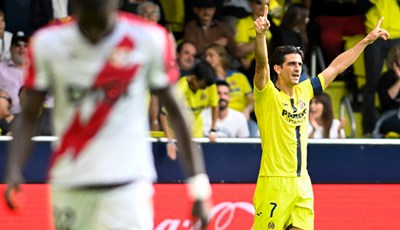
Od naranči do keramike i europske slave: Villarreal - liliputanac koji ruši nogometne careve
13 sati•Španjolski nogomet








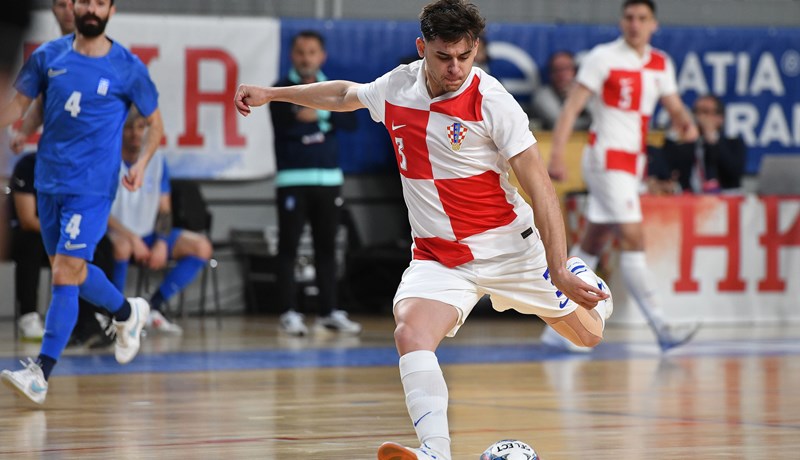
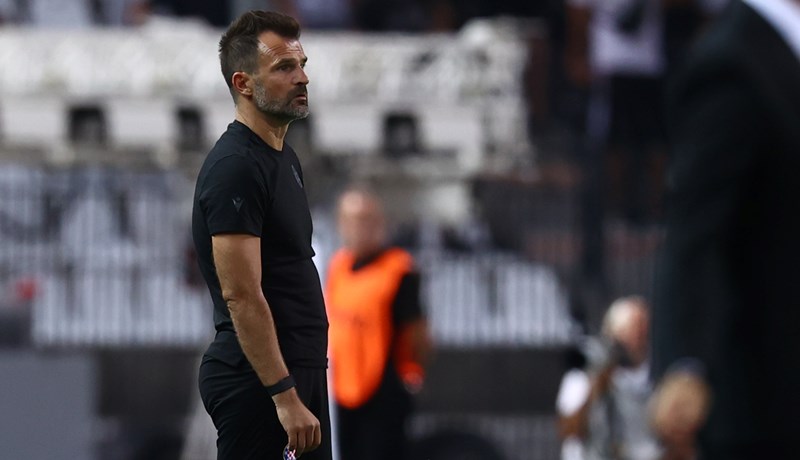
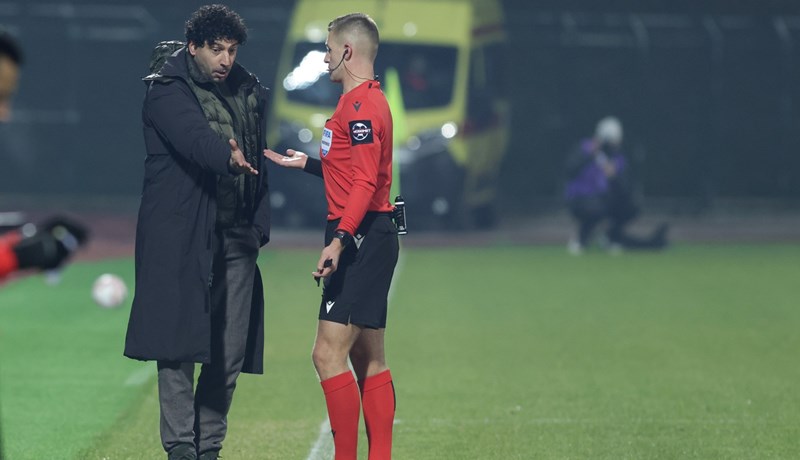








 Македонските навивачи Тоше и Коле вчера со лубеница го поздравија хрватскиот селектор Славен Билиќ. Облечени во македонски и во хрватски дрес, ја спакуваа лубеницата, која воопшто не е евтина (160 денари килограм), со убава шарена панделка и му напишаа порака: Со љубов, од „непријателска“ Македонија. Изборникот, по поразот од Македонија во Скопје во саботата (0-2), се жалеше на теренот на Градскиот стадион, на атмосферата во Скопје и рече дека од Македонија нема ни лубеници да купува.
Македонските навивачи Тоше и Коле вчера со лубеница го поздравија хрватскиот селектор Славен Билиќ. Облечени во македонски и во хрватски дрес, ја спакуваа лубеницата, која воопшто не е евтина (160 денари килограм), со убава шарена панделка и му напишаа порака: Со љубов, од „непријателска“ Македонија. Изборникот, по поразот од Македонија во Скопје во саботата (0-2), се жалеше на теренот на Градскиот стадион, на атмосферата во Скопје и рече дека од Македонија нема ни лубеници да купува.



